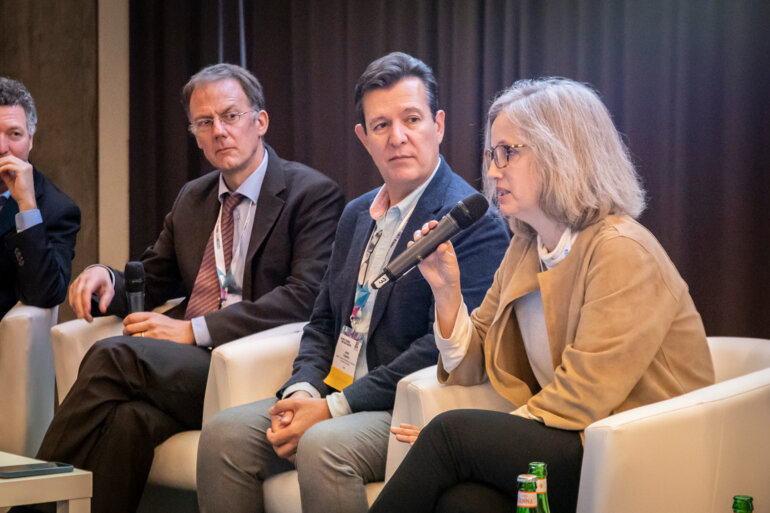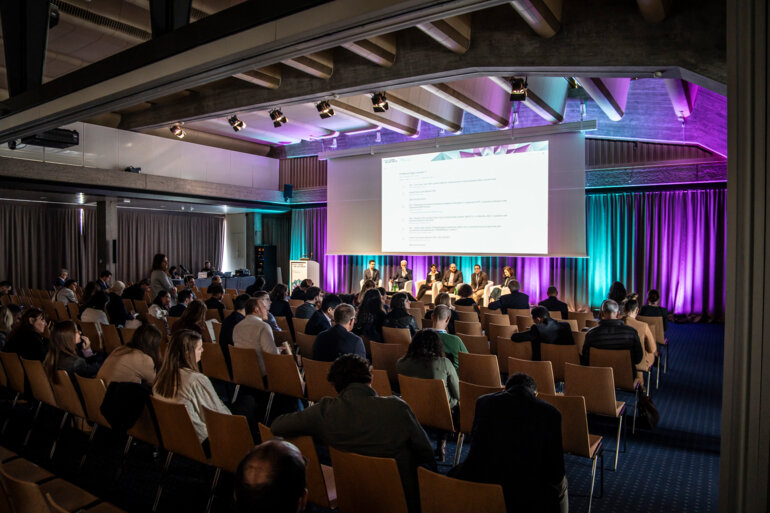Innovative models and increased cross-border collaborations can further support the implementation of rare cancer reference centres to expedite diagnosis and improve treatment
Globally, the treatment of patients with rare cancers remains suboptimal. A Dutch study presented at the ESMO Sarcoma and Rare Cancers Congress 2024 (Lugano, Switzerland, 14–16 March) highlights considerable diagnostic delays – almost one quarter of 1,541 patients with rare cancer had to wait more than 3 months for referral to hospital following their first primary care consultation and almost 15% had to wait more than 3 months after the first hospital physician appointment to receive their diagnosis (Abstract 40O). The initial diagnosis was not correct in 32% of patients, and indeed, 45% of these patients received treatment for the incorrect diagnosis.
Managing rare cancers in a reference centre has consistently been shown to have a positive impact on clinical outcomes. For instance, results from a prospective registry of the Spanish Group for Research in Sarcoma indicate that patients with soft-tissue sarcomas managed by reference centres had higher rates of 3-year overall survival compared with those managed by local hospitals (Oncologist. 2019;24:e338–e346). And the same results have been observed in France and other countries. Although the European Reference Network for rare adult solid tumours, EURACAN, promotes management within reference centres and equal implementation across Europe (Lancet Reg Health Eur. 2024:39:100861), discrepancies in organisation exist between different healthcare systems. Common problems include uneven geographic distribution of specialist centres meaning some patients must travel long distances, lack of clinician awareness of the most appropriate nearest centre, inadequate support in terms of resources, and also the bureaucracy and reimbursement issues involved in referring patients to different localities and regions in some countries.
As presented in Lugano, the Australian Rare Cancer Portal provides an excellent example of an accessible reference centre care model (Abstract 39O). The patient remains with their local team who receive centralised, online access to a network of national and international experts, with funding from the Australian Government. Advice is given via reports on various aspects including diagnosis, molecular testing, treatment recommendations, drug access and trial opportunities. An important educational component means that expert knowledge is passed on to local clinicians for future cases. In addition, patients are invited to participate in research and the collection of data is valuable in the field of rare cancers – 1,463 patients with 151 unique diagnoses have been seen in the last 4 years. However, challenges to be addressed include ensuring that professional collaborators are reimbursed and helping patients get wider access to trials and compassionate drug supplies.
Further collaborations may help clinicians and patients get the most out of reference centres. This is a key future objective of EURACAN, which aims to connect national networks, simplify cross-border healthcare and encourage international multidisciplinary tumour boards (Lancet Reg Health Eur. 2024:39:100861). In addition, the Sarcoma European-Latin American Network (SELNET) consortium continues its work linking expertise and sharing best practices between continents. An analysis of National Cancer Control Plans and other policy documents from 12 countries in South America, presented in Lugano, reported that rare cancers are infrequently addressed at a national policy level, suggesting that poor awareness and understanding of the unique aspects surrounding the diagnosis and treatment of rare cancers still exist in the region (Abstract 41P).
The evolution of these networks over the last few years means that more ambitious plans can now be made, including the launch of new investigator-led trials and registries, harnessing the power of reference centres to drive recruitment and to expand research.
Abstracts and presentations discussed:
Zhang BYH, et al. Four years and 1400+ patient referrals: achievements of the Australian Rare Cancer Portal. ESMO Sarcoma and Rare Cancers Congress 2024, Abstract 39O
Proffered Paper Session 1, 14.03.2024, h. 10:30 – 12:00, Hall B1
Padilla CS, et al. Diagnostic trajectories of rare cancer patients in the Netherlands: results from a nationwide cross-sectional survey. ESMO Sarcoma and Rare Cancers Congress 2024, Abstract 40O
Proffered Paper Session 2, 14.03.2024, h. 16:15 – 17:45, Hall A
Carmagnani Pestana R, et al. Assessment of rare cancers and sarcoma policy in National Cancer Control Plans (NCCPs) from South American countries: a report from the LACOG Sarcoma Group. ESMO Sarcoma and Rare Cancers Congress 2024, Abstract 41P
Poster Display Session, 15.03.2024, h. 12:00 – 13:00, Foyer Ground Floor
The mandatory centralisation of care in rare cancer reference centres: Does it always serve the patient benefit?
Controversy Session, 15.03.2024, h. 13:00 – 14:00, Hall B1







